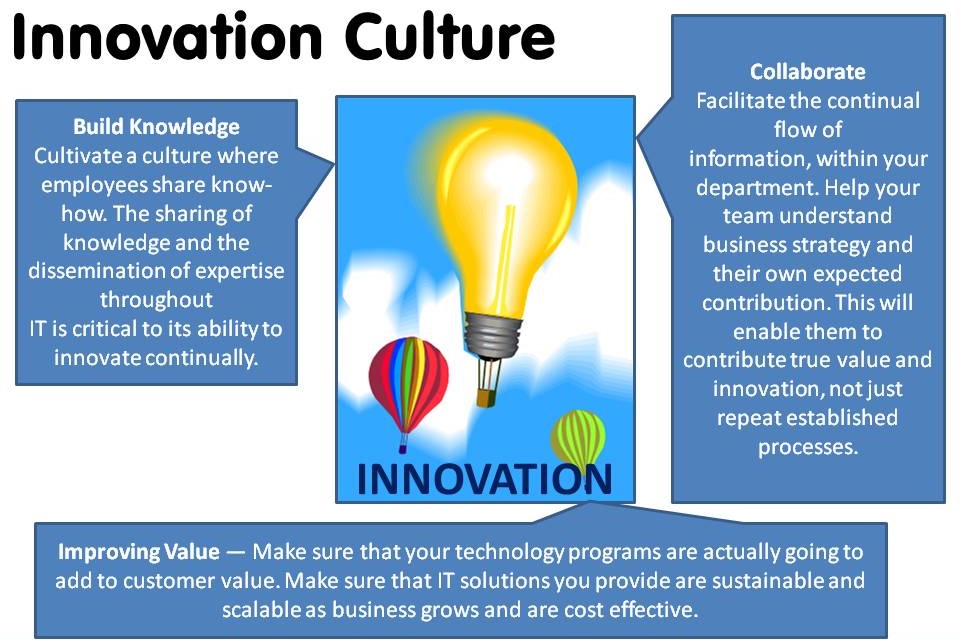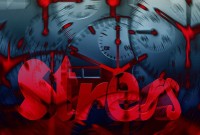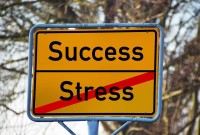- Home
- Business Processes
- Industry Knowledge
- Aerospace Industry
- Automotive Industry
- Banking Domain
- BFSI Industry
- Consumer/ FMCG Industry
- Chemicals Industry
- Engineering & Construction
- Energy Industry
- Education Domain
- Finance Domain
- Hospitality Domain
- Healthcare Industry
- Insurance Domain
- Retail Industry
- Travel and Tourism Domain
- Telecom Industry
- Leadership Skills
- eLearning
- Home
- Leadership
- Team Leadership
- Change & Culture of Innovation
Change & Culture of Innovation
Predicting the future is a tricky business but managers need to have a future perspective in order to take business advantage and remain competitive. They need to drive and introduce constructive change to the business of the enterprise. The first step to creativity and innovation is to drive a culture of Innovation. Managers need to focus on developing future mindset all the time to keep pace with the unfolding future.
One needs to have some broad awareness of whether the future is tending.
Changing Customer Needs
There are thousands of services, from the provision of spectacles to the development of your holiday plans, where the customer wants instant results. The industry-wide waiting time is fast reducing from days and hours to minutes. A conceptual shift is needed in the manager’s mindset to drive change toward getting as close as possible to an immediate meeting of the customer's needs.
Response time is getting better in the banking industry. Most banks provide the facility of instantaneous account debiting by automatic tellers at any time of day or night. In Manufacturing industries, the time value of information is gaining respect, and monitoring of the production line is in real-time. Service industries are trying to answer a business query immediately which is in turn, beneficial for both the customer and the provider. Computer-aided design and development is enabling the culture of straight to production and consumption. Innovation is constantly driving change across all industries.
Anyplace Customers want the service where they want it. They don't just want it where the supplier thinks it's convenient to hold it. They want it at anyplace. Already there are plenty of examples of this. Mobile has replaced so many gadgets like phone, pocket calculators, camera, heart monitors, step trackers, computers and desktops, etc. Earlier we would have had to go to the office to use a desk one for sending emails. Month by month the number of people who carry the phone around with them is growing, and they no longer have to go to where the phone is. They practically wear it. Portable computers of the lap variety enable business people to do their spreadsheets on the plane; home entertainment systems are now designed for self-assembly, so that you no longer have to wait for the technician but within an hour of purchase you are enjoying the fruits of your investment, having taken it home in two or three boxes in the car.
The customers today do part of what would previously have been done at the factory. The manufacturing chain of the goods and services ends in the hands of the consumer in their own physical space. Those who provide goods and services in a real-time gain a competitive edge over those who don't there is no time lag between the identifying of a need and its fulfillment.
Technology is Unfolding Future
The technology is there. It is simply that managerial thinking hasn't caught up with it. This is where future mindset comes in, developing all the time to keep pace with the unfolding future. The ability to provide the product in any place is facilitated by the advancement in electronics, whereby a million electronic components can be placed on a quarter of inch square of smelted sand. The information carried by electrical impulses demolishes space as well as time so as enables the customers to enjoy both benefits. No doubt all these innovations brought a lot of unwelcome change to those who preferred the status quo, but those with the future mindset like Apple, Google, and others not only survived but prevailed and emerged as winners.

Concept of Anytime Anyplace
There always existed an interrelationship between physics and management. Both physics and management are concerned with "the interrelationships of the parts with a whole". Time, space, and matter are fundamentals of physics, as equally fundamental to the shaping of tomorrow's business and organizations. The first dimension of physics which links with business needs is time. As we respond to and persuade customers, they use time until they decide to buy. Then we deliver, we are using theirs. We have to shorten the elapsed time between their decision and the fulfillment of their need. The customers want the product of service when they want it, not when the company deigns to provide it. They want it any time, and as explained above, technology already provides many examples of meeting this need.
These concepts of any time and any place are changing the way organization operates:
- It is becoming less significant where you work. Half of the world was working from home during the recent COVID-19 pandemic
- The number of home workers is on the increase, with the ultimate benefit to transport problems as the people working away on their computers.
- The human association is provided by the increasing speed of network connectivity
- Decentralization is happening, which is after all about the place
- As people work in networks, less dependent on space, so headquarters building is less inhabited and organizational hierarchies flattened
- Middle managers find a new place between the producers and the customers, instead of between the senior managers and the supervisors.
Building Innovation Mindset
Managers need to focus on building innovation culture by facilitating collaboration across organizations, building the breadth and depth of knowledge, and improving the value that any function provides to the business. They need to facilitate the continuous flow of information, within their departments. Help their team understand business strategy and their own expected contribution. This will enable them to contribute true value and innovation, not just repeat established processes.
Cultivate a culture where employees share know-how. The sharing of knowledge and the dissemination of expertise throughout the organization is critical to its ability to innovate continually. Make sure that your change initiatives and programs are actually going to add to customer value. Make sure that solutions are sustainable and scalable as the business grows and are cost-effective.
Related Links
You May Also Like
-
Team Development by Building Trust
As your team begins to work together, you need to establish a way each team member can exchange ideas and build mutual trust. Successful groups are built on trust and collaboration. A free exchange of ideas, in an open environment, will allow your team to get to know each other and enable you to check on how they work together. Learn some tips to help build team trust and establish personal bonds.
-
Reasons behind Wastage of Time
Under-utilization of time may be due to the faulty system or faults of manager/officer/leader or due to lack of planning. There could be many factors driving the procrastination behavior like system issues, personal work habits, and lack of delegation, personality traits, and bad working habits of the leader, failure to tackle interpersonal conflicts, obstacles, and lack of far-sightedness.
-
Many different types of teams have been identified by social scientists. Managers may encounter the diverse types of challenges while managing different kinds of teams. Challenges associated with Cross-Functional Teams might be different from that of a Geographically Dispersed Team or a Virtual Team. This article explores some common categories and subtypes of teams.
-
Recognizing Stress & its Sources
As an individual, you almost certainly know what stress feels like. Stressors are events or situations to which people must adjust. Stressors may be physical or psychological in nature. The level of severity of stress is determined not merely by exposure but the intensity, duration, and frequency of stressors. The sources of stress are many. They arise from multiple areas both with the individual and from the environment.
-
Stress is an essential part of our life. No one can live without stress. Stress can be beneficial as well as harmful. Stress as a positive influence adds excitement and hope while as a negative influence it can result in destructive feelings, anger, and depression. Although the general orientation to stress is to consider unfavorable outcomes, yet one must have observed that stress experiences may also facilitate the development of effective and varied coping behavior, increased personal resources, and lead to a sense of competence in development. Stress at a moderate level is not only inevitable but may be useful for physical and mental well-being.
-
As we know change is inevitable as market expectations are not static, new technology is constantly being developed, and organizational responses are inevitable to these sequences. It is a simple matter of business evolution. If every manager and every employee could have some understanding of the triggers of change and their relationships with each other, then the acceptance to change would be easier.
-
Charles Darwin had once commented that “It is not the strongest or the most intelligent who will survive but those who can best manage change.” Agility means the capability of rapidly and efficiently adapting to changes and recently, agility has been applied in the context of software development, agile enterprise, and agile leadership. Agile leaders play an important, even essential, role in scaling agility in an organization. Understand how being an agile leader helps in effectively catalyzing organizational change.
-
Concept & Definition of Stress
Stress is a popular expression used by people in day to day life. Pressures of day to day living sometimes necessitate coping or dealing with them and stretch the body beyond its natural capacity. They are called stressors. Stress is a natural, ongoing dynamic, and interactive process that takes place as people adjust to their environment.
-
Stress is a product of the busyness of modern life. It has assumed grave dimensions ever since the emergence of industrialism. In fact, stress is a natural, ongoing, dynamic, and interactive process that takes place as people adjust to their environment. Stress can be brought about by positive or negative life events. Distress can cause disease and eustress or positive stress can promote wellbeing and increased productivity. Learn to recognize and be responsible for your stress, and learn the ways to manage stress.
-
Creating Highly Effective Teams
How do we create effective teams? What comes to mind when you think about an effective team? High performing teams exhibit accountability, purpose, cohesiveness, and collaboration. It is a team that works seamlessly as a whole. Everyone brings unique talents and strengths and support each other to bring out the best in everyone. How do you create one?
Explore Our Free Training Articles or
Sign Up to Start With Our eLearning Courses

About Us
Learning
© 2023 TechnoFunc, All Rights Reserved










